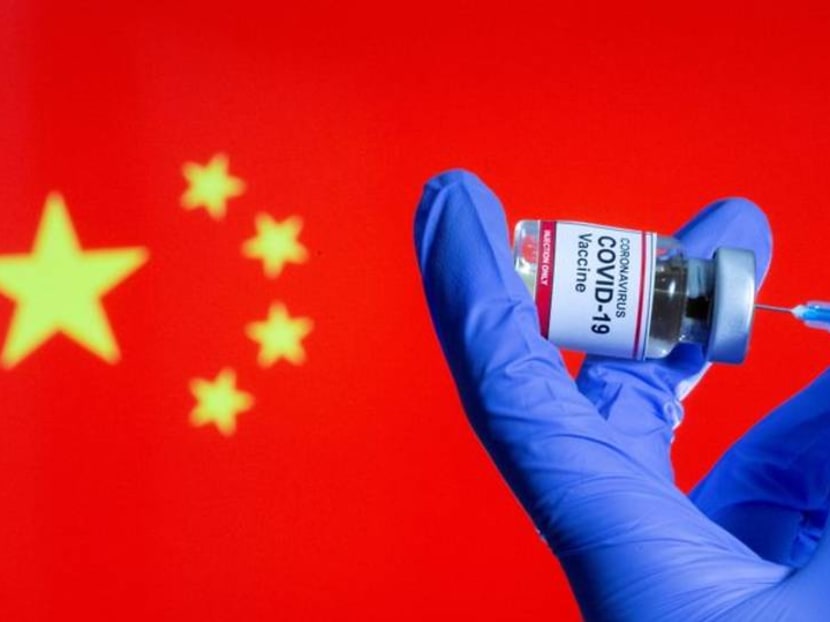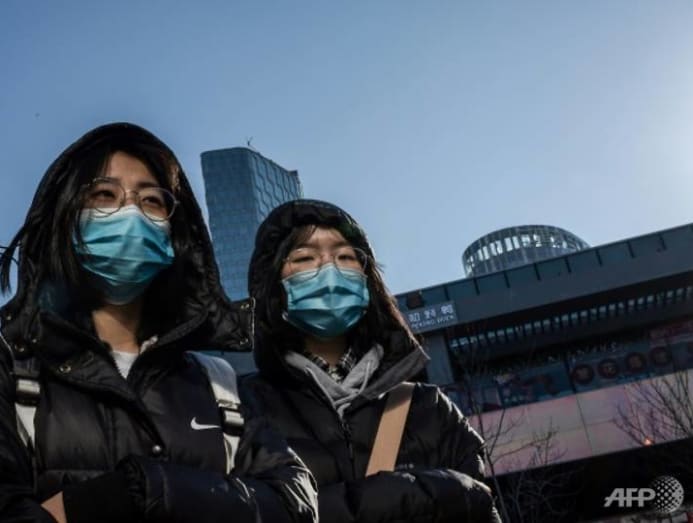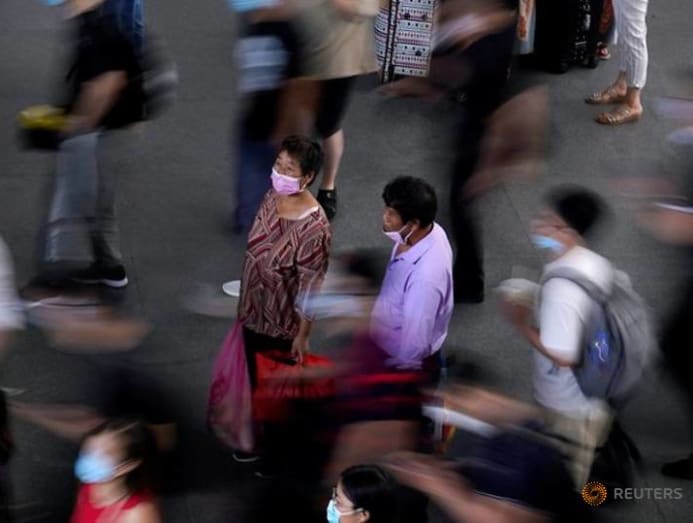Commentary: China’s COVID-19 successes - credible at home, not so much abroad
By all accounts, China has beaten COVID-19 but there are still doubts, especially over its vaccines. NUS' East Asian Institute's Ryan Ho gives his take.

FILE PHOTO: A woman holds a small bottle labeled with a "Coronavirus COVID-19 Vaccine" sticker and a medical syringe in front of displayed China flag in this illustration taken, October 30, 2020. REUTERS/Dado Ruvic
SINGAPORE: While the world is still dealing with the pandemic amid new variants, China seemed to have kept COVID-19 largely under control.
As of Jul 1, there have been 91,780 infections in China, with 86,689 recovered and 4,636 deaths. The United States with a population one-quarter that of China, has about 33.6 million cases and about 604,000 deaths.
What about India? It has seen 30.4 million infections and 398,000 deaths.
READ: Commentary: Survivors of India’s ferocious second COVID-19 wave left scarred by crisis
A SWIFT RESPONSE TO CURTAIL SPREAD
China’s response was swift. The first cluster of pneumonia-like cases was reported in Wuhan, Hubei on Dec 31, 2019. Just ten days later, China released the genomic sequence of the virus.
Later that month, China began enacting a raft of countermeasures, placing Wuhan under a strict lockdown, a hotly debated world first.
Similar measures were implemented in every city in Hubei, with 14,000 health checkpoints established at public transport hubs across the country.
People who crossed into marked exclusion zones were put on home quarantines and had to report their temperature for two weeks. School reopening were delayed. Population movements were curtailed.
Within weeks, China tested 9 million people for the virus in Wuhan, and a national system of contacting tracing was set up.
Some of China’s success in meeting the challenges of COVID-19 has been a function of luck. As the world’s largest manufacturer of personal protective equipment, China could ramp up the production of surgical masks.
But much of the preparedness was rooted in a bad past experience.

The SARS outbreak in 2003 had a psychological impact on raising the alertness levels of society and government. It was a socio-political crisis for the country despite only over 5,000 infections and 343 deaths recorded. Retail sales plummeted by half, 2 percentage points in growth was shaved.
Little surprise then that compliance among the Chinese public to put on masks have been high, even before being told to do so by authorities.
Vowing never again to remain vulnerable to such pandemic shocks, China had put in place drawer plans for a centralised epidemic response system, allowing the central government to react quickly to stop the transmission, avoid bureaucratic delays and tackle clusters.
The Epidemic Prevention and Control Headquarters System oversaw the deployment of community resources at the local level.
A Joint Prevention and Control Mechanism established by the State Council in January, comprising 32 government agencies answerable to President Xi Jinping, directed and mobilised national resources – including the deployment of healthcare teams, the building of makeshift hospitals and the standardisation of healthcare measures.
In essence, China’s decisive response arises from a combination of a population that takes respiratory infections seriously and a government with the capability to put bigger constraints on individual freedoms less easily accepted in other countries.
READ: Commentary: How Tencent became world’s most valuable social media company – and then everything changed
READ: Commentary: Life in China after COVID-19 lockdown gives normal new meaning
SCEPTICISM OVER CHINA’S COVID-19 MANAGEMENT
Despite such recorded successes, there has been some scepticism over China’s handling of COVID-19 and its official statistics suggesting the country has brought the virus to heel.
This scepticism stems from China’s sketchy reputation in providing credible official numbers, its cover-up of the virus in Wuhan in early January 2020, and the changing goalposts on case numbers where there were seven different definitions for COVID-19 issued by the National Health Commission at the onset of the outbreak.
Still, there’s only scant evidence to suggest any coordinated concealment of a large number of cases and deaths.
It is near impossible for word not to get out considering the scale of people movements and the widespread use of social media like Weibo and Douyin where citizens document, discuss and share developments.
READ: Commentary: Why the West has problems defining a clear China policy

In just the first week of October 2020, about 637 million Chinese were travelling during the Golden Week holidays, not far behind the pre-pandemic equivalent of 782 million in 2019.
Chinese authorities would unlikely risk relaxing such rules if new cases remained high.
COVID-19 VACCINES: JURY IS STILL OUT
China has given more than 1.18 billion vaccine shots. That means out of the 3.05 billion shots administered around the world, more than a third has been in China.
The sight of thousands watching the CCP’s centenary celebrations this week spoke volumes of how far the country has come in beating back the pandemic. Other countries hope to get there soon.
Vaccines from Sinovac and Sinopharm, some of the first few approved for use last year, have made their way abroad.
As inactivated vaccines made from viral particles produced in a lab, the technology is longstanding, similar to vaccines for polio, Hepatitis A and the flu.
READ: Commentary: Inaccurate public understanding of COVID-19 vaccine efficacy has implications for vaccination rates
Yet in clinical trials, Sinovac’s efficacy at preventing symptomatic infection is lower than the mRNA vaccines at 51 per cent in Brazil, 67 per cent in Chile, 65 per cent in Indonesia, and 84 per cent in Turkey.
Despite assurances from the World Health Organization (WHO) that Sinopharm and Sinovac vaccines are safe and efficacious, with both approved for emergency use by the WHO, there are serious questions over how effective the Chinese vaccines are in providing herd immunity and at least reduce the risk of spread and severe disease, particularly against new variants.
READ: Commentary: How COVID-19 vaccines are being weaponised as countries jostle for influence
READ: Commentary: Variants versus vaccines is becoming the new COVID-19 race
Countries like Seychelles, which have mostly used the Chinese vaccines in their inoculation drives, have seen cases rise. Bahrain and the United Arab Emirates have been offering booster shots to people who have had two shots of Sinopharm.
Similarly, Indonesia has announced tighter restrictions just this week, on the back of news of rising infection numbers including hundreds of medical workers vaccinated with Sinovac hospitalised with COVID-19.
Chile too has achieved high vaccine coverage, mostly with Sinovac. Around 75 per cent of the adult population has received one dose, and 58 per cent two doses yet the country had to impose a blanket lockdown in Santiago given a surge of infections in June that experts are saying may be related to the more transmissible Gamma variant that first emerged in Brazil.
While infectious disease experts interviewed by Bloomberg say the Chinese vaccines are still worth taking, they highlight the problem is the clinical data, which “did not include many old people or many people with co-morbidities”.
(Are COVID-19 vaccines still effective against new variants? And could these increase the risk of reinfection? Experts explain why COVID-19 could become a “chronic problem" on CNA's Heart of the Matter podcast.)
LAB LEAK THEORY: MORE POLTICS THAN TRUTH
There’s a new front on the horizon regarding China’s success in dealing with COVID-19: Whether the virus could have been deliberately developed in a lab.
Despite the lab-leak theory being given a fresh bout of life with US President Joe Biden ordering a further US intelligence investigation, there has been no new evidence the virus was developed in a laboratory setting in China.
And yet while a WHO team of appointed scientists who were in Wuhan to investigate indicated that the lab-leak theory was “extremely unlikely” in March, they could not draw a firm conclusion.
Rumours have also swirled after it was discovered last month that Peter Daszak, a key organiser of the March 2020 statement in the Lancet dismissing the idea of a lab leak, had links to the Wuhan Institute of Virology.
READ: Commentary: What’s really behind fresh calls for investigations into COVID-19 origins
READ: Commentary: Why the Wuhan lab-leak theory is back despite lack of new evidence
Recent reports claiming several lab workers at the same institute getting sick in November 2019 should be taken with a pinch of caution.
More than a secret plot to cover up a lab leak, the likely story here is the complexity, self-interest and political messiness in a blame game on the origins of the pandemic, mired in the international politics of the US-China rivalry.
In essence, it would seem China does deserve some credit in fighting off COVID-19 to resume some semblance of domestic normalcy.
However, outside its borders, the jury is still out regarding the country’s credibility in fighting COVID-19 through the deployment of China-made vaccines when more effective ones are available.
Ryan Ho is researcher at the NUS East Asian Institute.





